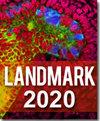Genotypic Characterization of a Chinese Family with Osteogenesis Imperfecta and Generation of Disease-Specific Induced Pluripotent Stem Cells
IF 3.1
4区 生物学
Q2 Immunology and Microbiology
引用次数: 0
Abstract
Background : Osteogenesis imperfecta (OI) is a rare genetic disorder characterized by recurring bone fractures. Some OI patients have other clinical manifestations such as growth retardation, dental abnormalities, blue sclera, and hearing loss. The relationship between the phenotype and genotype of OI is indistinct, and there is no cure for OI. Therefore, an appropriate disease model is urgently needed to understand the pathophysiology of OI. Induced pluripotent stem cells (iPSCs) are capable of developing into three germ layers and have the same genetic background as the donor cells they were derived from; thus, they are an appropriate disease model. Methods : Blood samples collected from the proband and her affected children and one unaffected child were used for genotyping by whole genome sequencing. A patient-specific iPSC line and a healthy donor iPSC line were generated by reprogramming peripheral blood mononuclear cells with episomal plasmids containing seven transcription factors, namely, OCT4 , SOX2 , NANOG , LIN28 , cMYC , KLF4 , and SV40LT . Results : The proband and her two affected children were homozygous for a mutation in collagen type I alpha 1 exon 10, c.725G > T, predicting a p.G242V substitution. A patient-specific iPSC line and a healthy donor iPSC line were generated and characterized in terms of their human embryonic stem cell-like morphology, expression of pluripotency markers, and the ability to differentiate into cells of three germ layers. Conclusions : Here, we report the phenotyping and iPSC disease modeling of an OI family. The detailed phenotyping of the OI family and establishment of iPSCs from an OI patient and healthy family member will provide a powerful tool to evaluate the pathophysiology of OI and develop targeted therapies一个中国成骨不全症家族的基因型特征及疾病特异性诱导多能干细胞的生成
背景:成骨不全症(OI)是一种罕见的遗传性疾病,以反复骨折为特征。一些 OI 患者还有其他临床表现,如生长迟缓、牙齿异常、蓝色巩膜和听力损失。骨质疏松症的表型与基因型之间的关系并不明确,而且骨质疏松症无法治愈。因此,迫切需要一种合适的疾病模型来了解 OI 的病理生理学。诱导多能干细胞(iPSCs)能够发育成三个生殖层,并且与供体细胞具有相同的遗传背景,因此是一种合适的疾病模型。方法:通过全基因组测序对采集自疑似患者及其受影响子女和一名未受影响子女的血液样本进行基因分型。通过用含有七种转录因子(即 OCT4、SOX2、NANOG、LIN28、cMYC、KLF4 和 SV40LT)的外显子质粒对外周血单核细胞进行重编程,产生了患者特异性 iPSC 株和健康供体 iPSC 株。结果:原告和她的两个患儿均为 I 型胶原蛋白α1 第 10 号外显子 c.725G > T 基因突变的同源基因,预测为 p.G242V 取代。我们生成了一个患者特异性 iPSC 株系和一个健康供体 iPSC 株系,并对其类似人类胚胎干细胞的形态、多能性标记的表达以及分化为三个生殖层细胞的能力进行了鉴定。结论:在此,我们报告了一个 OI 家族的表型和 iPSC 疾病模型。对 OI 家族的详细表型分析以及从 OI 患者和健康家族成员建立 iPSC 将为评估 OI 的病理生理学和开发靶向疗法提供强有力的工具。
本文章由计算机程序翻译,如有差异,请以英文原文为准。
求助全文
约1分钟内获得全文
求助全文
来源期刊

Frontiers in Bioscience-Landmark
生物-生化与分子生物学
CiteScore
3.40
自引率
3.20%
发文量
301
审稿时长
3 months
期刊介绍:
FBL is an international peer-reviewed open access journal of biological and medical science. FBL publishes state of the art advances in any discipline in the area of biology and medicine, including biochemistry and molecular biology, parasitology, virology, immunology, epidemiology, microbiology, entomology, botany, agronomy, as well as basic medicine, preventive medicine, bioinformatics and other related topics.
 求助内容:
求助内容: 应助结果提醒方式:
应助结果提醒方式:


